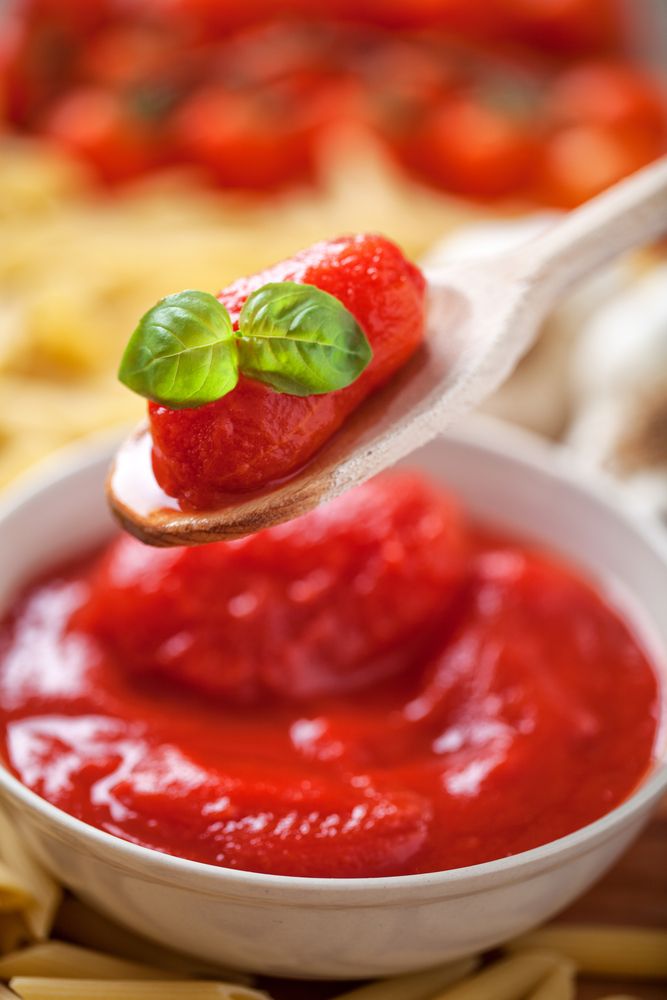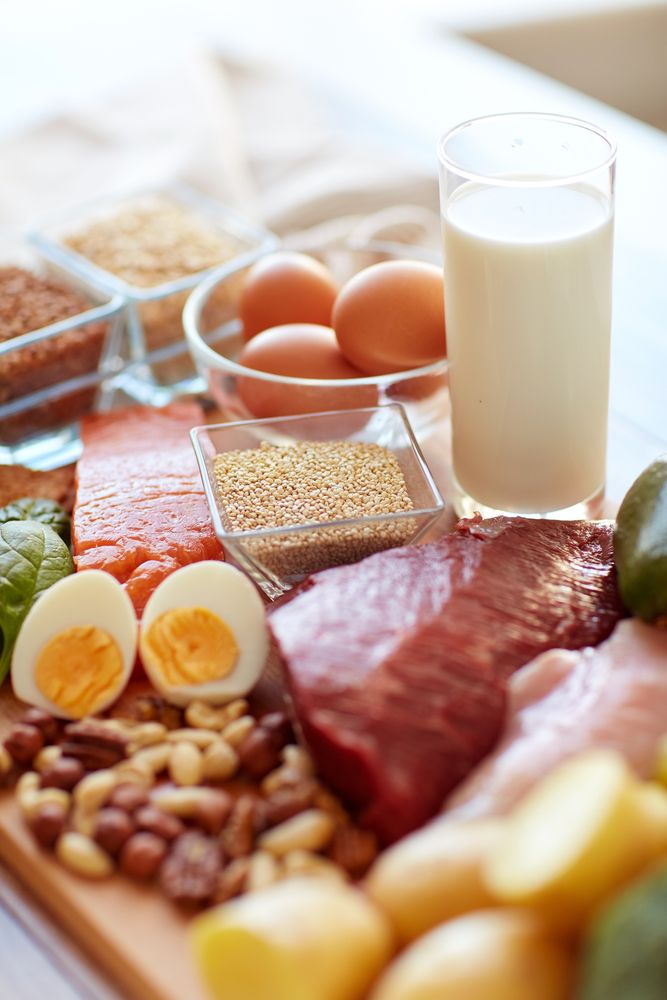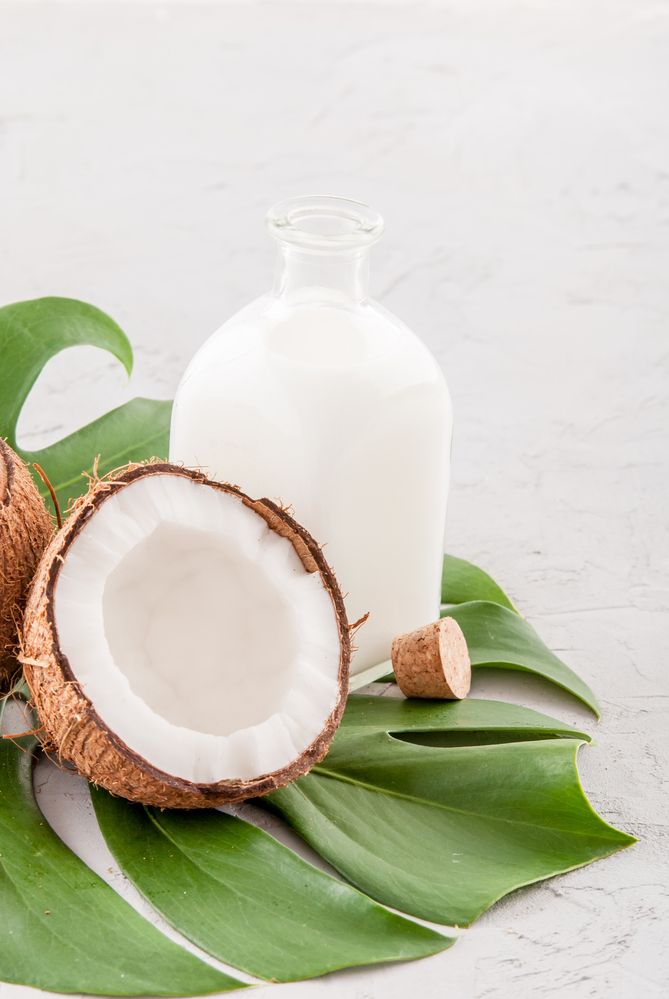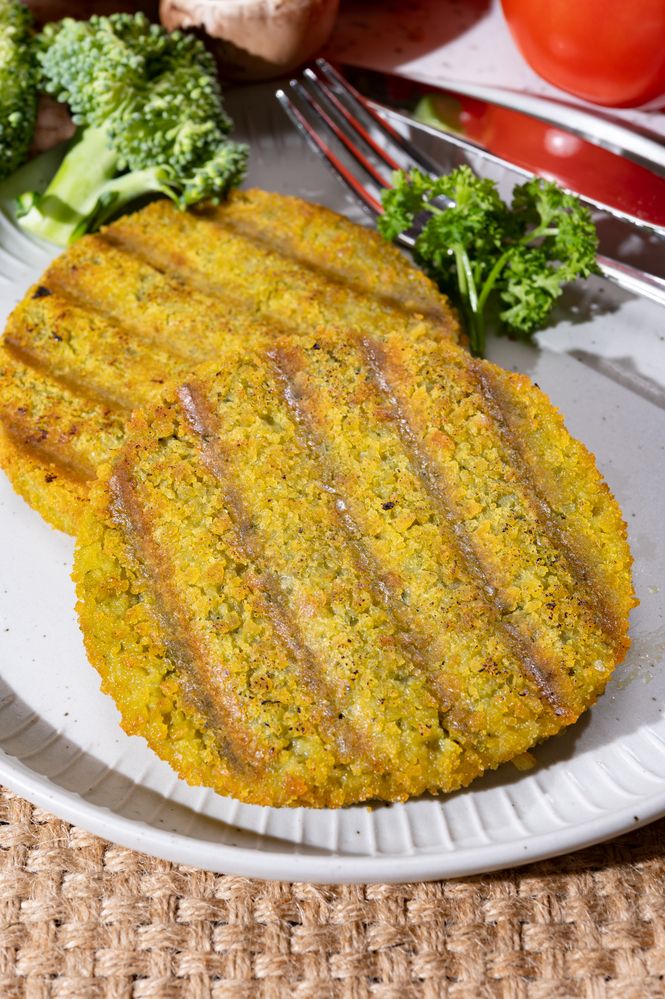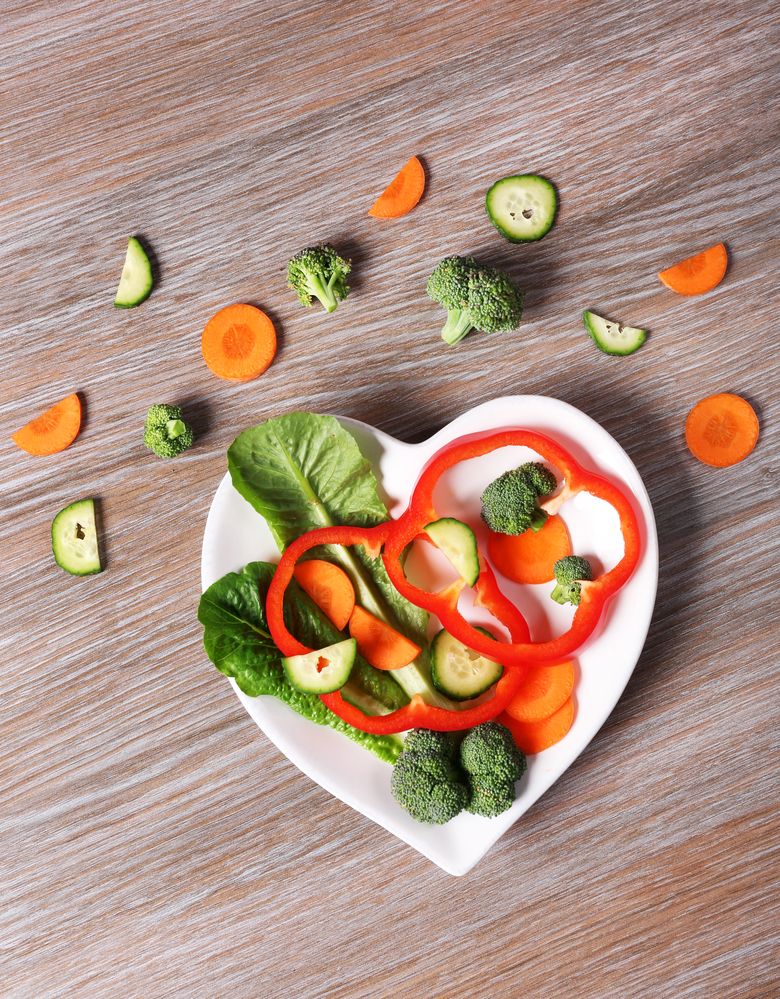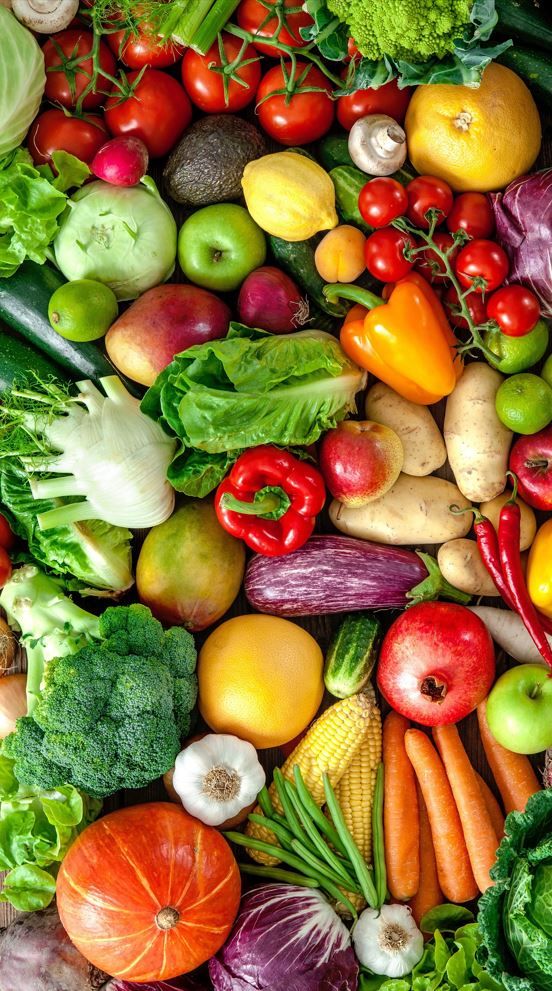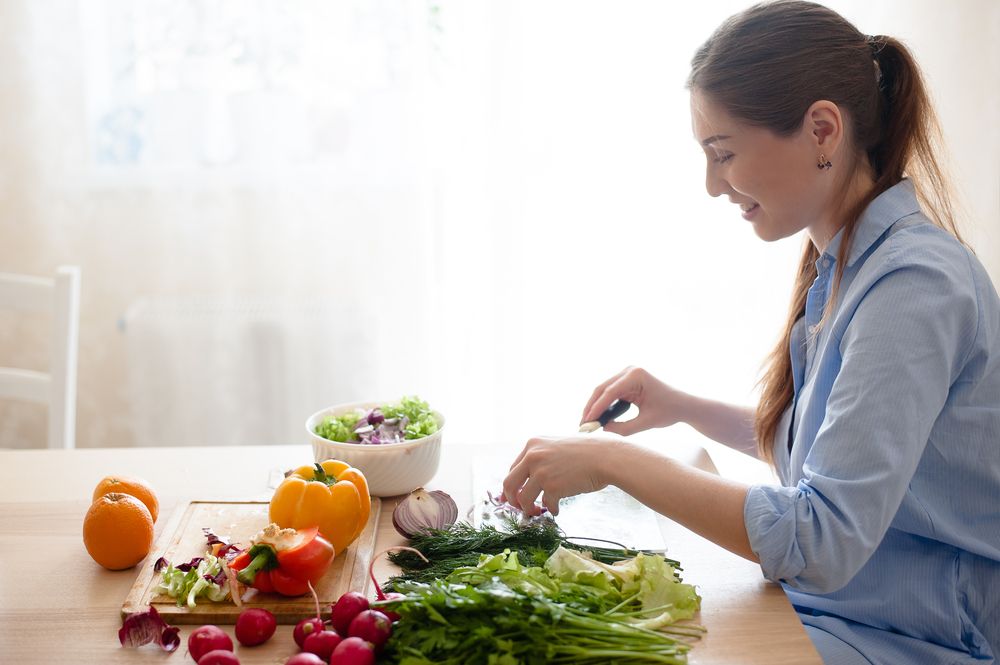How to convert sodium to salt (and salt to sodium)
Written by Catherine Saxelby
on Friday, 06 August 2010.
Tagged: food labels, guides, measures, MSG, salt

As a nutritionist, my aim is to help busy women eat healthily. One of the ways to do this is to follow the general nutrition advice to reduce the salt in your diet. So, how can you do this when what you’ll see on a food label and on any recommended daily intakes is sodium?
What’s the difference between salt and sodium?
Chemically salt is sodium chloride which is made up of one atom of sodium plus one atom of chlorine. While half the salt molecule is sodium, it’s not half by weight. You can’t just halve the weight of salt to find your sodium intake. Sodium is roughly 40 per cent of the weight of salt, with chlorine the remaining 60 per cent.
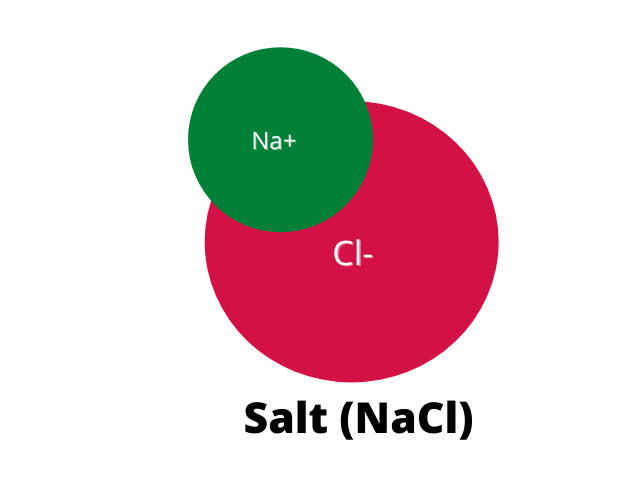 In tiny quantities, both sodium and chlorine are essential for health and growth. The problem today is we eat way too much sodium.
In tiny quantities, both sodium and chlorine are essential for health and growth. The problem today is we eat way too much sodium.
Two ways to convert
To help you, I've put together my quick converter table in Step 1 or else use the handy rules in Step 2.
1. Quick sodium and salt converter table
| Salt in grams |
Sodium in mg | This is roughly equivalent to | Nutrition cut-offs |
| 1 | 400 | Good pinch of salt | |
| 1.25 | 500 | One-quarter of a teaspoon salt | |
| 2.3 | 920 | One-third of a teaspoon salt | Lower limit of the RDI |
| 2.5 | 1000 | Half a teaspoon salt | |
| 4 | 1600 | ¾ of a teaspoon salt | |
| 5 | 2000 | One teaspoon salt | Aim for this as your maximum day's intake |
| 6 | 2400 | 1¼ teaspoons salt | Upper limit of the RDI |
| 10 | 4000 | 2 teaspoons salt | |
| 12 | 4800 | 2½ teaspoons salt | Average intake upper end |
So, 5 grams of salt is equal to 2000mg of sodium, both of which are contained in one teaspoon of salt.
If a recipe calls for one teaspoon of salt and serves 4 people, you're getting one-quarter of a teaspoon of salt from it or around 500mg sodium per serve.
2. Use the conversion rules
To convert the sodium to salt or salt to sodium, use these rules:
Sodium to salt
To convert sodium to salt, multiply the sodium figure in milligrams (mg) by 2.5 and then divide by 1,000. So:
milligrams of sodium x 2.5 = milligrams of salt
Divide by 1,000 to convert to grams of salt
Example
200mg of sodium
200mg x 2.5 = 500mg salt ... then divided by 1,000 = 0.5 grams salt
So 200mg of sodium equates to 500milligrams or 0.5 grams of salt
Salt to sodium
To convert grams of salt to milligrams of sodium
Divide the salt figure in grams by 2.5 and then multiply by 1,000 to get milligrams.
grams of salt ÷ 2.5 = grams of sodium
grams of sodium x 1,000 = milligrams of sodium
Example
6 grams of salt
6g ÷ 2.5 = 2.4g salt ... then multiplied by 1,000 = 2400 mg of sodium
So 6 g of salt equates to 2400 milligrams of sodium
How much sodium is too much?
Our sodium intake should be less than 2,300 mg per day, roughly a teaspoon (or 6 grams) of salt. Ideally, getting your sodium to less than 1600 mg per day is even better as it can help prevent ill health later in life. I suggest you use the mid-point figure of 2,000 mg sodium as a convenient figure to remember.
However, the average daily intake is somewhere between 6 to 12 grams of salt (or 6,000 to 12,000 milligrams) which roughly equates to 2,300 to 4,600 milligrams of sodium. This means we're consuming double the amount we need.
Sodium - what's low?
 Less than 120 mg sodium per 100 grams is a low sodium food. These are unsalted foods such as unsalted butter, unsalted margarine, canned tomatoes with no added salt and fresh produce like vegetables, fruits, nuts, milk, fish, meat, eggs, oils, rice, pasta, couscous, pearl barley and other grains.
Less than 120 mg sodium per 100 grams is a low sodium food. These are unsalted foods such as unsalted butter, unsalted margarine, canned tomatoes with no added salt and fresh produce like vegetables, fruits, nuts, milk, fish, meat, eggs, oils, rice, pasta, couscous, pearl barley and other grains.
Sodium - what's high?
More than 600 mg sodium per 100 grams is a high sodium food. This can vary from category to category e.g. any bread under 400 mg is considered acceptable, but for salty sauces anything under 1000 mg is a good achievement.
Other forms of sodium apart from salt
A food may contain NO salt (sodium chloride) but may still be high in sodium because of the presence of naturally-occurring sodium (as in celery or spinach) or other sodium containing ingredients and additives such as:
| Baking powder Baking soda |
Sodium bicarbonate |
| Flavour enhancer | MonoSodium Glutamate (MSG) |
| Preservatives | Sodium benzoate, sodium nitrite, sodium sulphite |
| Antioxidant | Sodium ascorbate (the sodium salt of ascorbic acid or Vitamin C). You'll see this as an additive in many white wines under the additive code No 300 |
Compare high, medium and lower salt foods
Look at these three categories of similar foods divided into the high, medium and lower category e.g corn flakes (highest in salt) vs weet-bix (medium) vs oats (lower). You will see the same gradation for baked goods such as croissants and crumpets and for soups.
|
Sodium category |
Food |
Serve |
mg sodium per serve |
g salt per serve |
|
|
Breakfast cereal |
|
|
|
|
High - over 600 mg per 100 g |
Kellogg’s Corn Flakes |
1 metric cup, 35 g |
169 |
0.4 |
|
Medium - between 120 and 600 mg per 100 g |
Sanitarium Weetbix |
2 biscuits, 30 g |
81 |
0.2 |
|
‘Lower’ - less than 400 mg per 100 g but see note below * |
Uncle Toby’s rolled oats |
1 serve, 40 g uncooked |
2 |
Less than 0.1 |
|
|
‘Breads’ |
|
|
|
|
High |
Croissant |
1, 57 g |
424 |
1.1 |
|
Medium |
Golden crumpet |
1, 50 g |
300 |
0.8 |
|
‘Lower’ |
Sunblest white bread |
2 slices, 60 g |
250 |
0.6 |
|
|
Soup/stock |
|
|
|
|
High |
Campbell’s Chicken Stock |
1 cup, 250 ml |
1,118 |
2.8 |
|
Medium |
Continental Chicken Noodle soup |
1 cup, 250 ml, 1 packet makes up 4 serves |
685 |
1.7 |
|
‘Lower’ |
Home-made chicken stock, no added salt |
1 cup, 250 ml |
230 |
0.6 |
|
Suggested daily maximum |
|
|
2000 |
5 |
Figures taken from food labels as at 2020
* We have classed these items as "low" compared to other products. However, some of these do not meet the official government definition of less than 120 mg per 100g. However they are all under 400mg per 100g.
Editor's note: This article was updated in August 2020. Catherine Saxelby aims to help busy women eat healthily and keep up-to-date on the latest nutrition information. Sodium levels in general have reduced since this article was first published and the latest figures have been added to the tables.
Downloads / Fact Sheets
Download our free Fact Sheet Cut down on salt
You may also be interested in...
About the Author
Catherine Saxelby has the answers! She is an accredited nutritionist, blogger and award-winning author. Her award-winning book My Nutritionary will help you cut through the jargon. Do you know your MCTs from your LCTs? How about sterols from stanols? What’s the difference between glucose and dextrose? Or probiotics and prebiotics? What additive is number 330? How safe is acesulfame K? If you find yourself confused by food labels, grab your copy of Catherine Saxelby’s comprehensive guide My Nutritionary NOW!
Reviews
-
Read more
Product snapshot: Tomato pasta sauces
18 September 2023 by, Catherine Saxelby
What’s in your favourite tomato pasta sauce, and how much of it? Here are the most popular sauces reviewed for your reading pleasure.
I’ve rated nine of the most popular tomato pasta sauces in terms of their nutrition, ingredient lists and jar size. You’ll find many of these in your local supermarket. The sauces are ranked:
- from Italian (Italy grows the reddest full-flavoured tomatoes) to Australian
- per 100 grams, which is equivalent to 3½ ounces (the standard for comparing food products)
- by serving size (varies between brands but is generally 100–175 g in size)
- by ingredient list, jar size and where made (with each product’s website as the source)
The bottom line
When you’re next out shopping, run your eyes down the per 100 g column and look for products containing less than 400 mg sodium AND less than 5 g fat (which equals 5% fat). Most of the brands are below these levels. I like Barilla, Sacla, Leggo’s, La Gina and Mutti – but that’s just me!
-
Product review: Low-sugar alcoholic ginger beer
1 March 2023 by, Catherine Saxelby
Want something to drink before dinner? Something that’s LOWER in alcohol than wine? To match his beer? Then look no further than Bundaberg’s low-sugar alcoholic ginger beer.
You can drink Bundaberg low-sugar ginger beer straight from the can, or pour it into a long glass over ice with a slice of lime.
-
Product snapshot: Berkelo’s Khorasan Macaroni
14 September 2022 by, Catherine Saxelby
I’m loving this macaroni from Berkelo. I was sent a sample for Whole Grain Week 2022 by the Grains Legume Nutrition Council. I cooked it up and found that it was just divine! Read on for more …
-
Product review: Super high-oleic safflower oil
11 May 2022 by, Catherine Saxelby
“What does super high-oleic mean?” I hear you ask. Also, “I haven’t heard of safflower for ages. What’s the deal?” Read on and all will be explained.
-
Product review: Healthy Life Food Tracker
6 April 2022 by, Catherine Saxelby
When I was first asked to write this review, I thought, Not another tracker.
After all, there have been several in recent years, such as My Fitness Pal and Everyday Diet Diary. But this one is different. It works by using your Everyday Rewards card AND your shop at Woolworths.
-
20 October 2021 by, Catherine Saxelby
With home delivery on the rise, this post is reviewing none other than that stalwart Lite n’ Easy. We all know their meals are good for weight loss (which we all need after COVID-19!), but did you know they’re also good for general health and wellbeing ? Eating well to nourish yourself – putting your mental health and wellbeing at the forefront – is gaining momentum. Lite n’ Easy meals also ensures you satisfy your need for vitamins, minerals, fibre and phyto-compounds, such as sterols and carotenoids.
 This post has been sponsored by Lite n' Easy.
This post has been sponsored by Lite n' Easy. -
Product review: Birds Eye Plant Based range
15 September 2021 by, Catherine Saxelby
When you think of Birds Eye, their frozen peas and fish fingers probably come to mind. But I bet you’d never think of plant-based products!
 This post has been sponsored by Birds Eye.
This post has been sponsored by Birds Eye.
Healthy Weight Loss
-
Read more
Intermittent fasting vs daily calorie restriction
3 May 2023 by, Catherine Saxelby
As you probably know already, intermittent fasting (IF) has gained favour as an alternative regimen to daily caloric restriction (DCR). Fasting is shown to extend the lifespan of rats, and has been associated with metabolic benefits in humans, yet the results so far have been inconsistent. So, which regimen is best for healthy weight loss?
-
15 March 2023 by, Catherine Saxelby
What sort of a diet should you follow to lose that excess weight? These days, it’s pretty confusing with high-protein Keto advocates clashing with plant-protein followers … as well as intermittent fasters, juice-only dieters, no-carb dieters and no-animal (aka plant-based) dieters. Plus all the ads for anti-hunger supplements, meal-replacement shakes and home-delivered meals, more of which somehow appear every day. So, what sort of diet should YOU follow to lose that excess?
-
Protein shakes for weight loss
9 November 2022 by, Catherine Saxelby
These days, protein shakes aren’t bought by just body builders – they’re so popular that you can readily buy a 400 g tub at your local supermarket or service station. And with tempting claims such as ‘Facilitates muscle toning’, ‘Contains transformation-making protein’ and ‘Tastes incredible, mixes easily’, why wouldn’t you grab one? But protein shakes aren’t the magic answer to all your weight-loss woes. Let’s take a look at what you get for your money.
Guest post by dietitian Zoe Wilson APD
-
20 January 2021 by, Catherine Saxelby
Many of us have cravings from time to time and for different reasons. One thing is certain, they can sabotage all your best efforts at a healthy diet and/or weight loss. The good news? You CAN beat them. I’ll tell you how.
-
How to lose weight WITHOUT going on a diet
14 October 2020 by, Catherine Saxelby
The word 'diet' is a turn-off for most people. It sounds hard, unpleasant and unpalatable. Losing weight doesn’t have to be hard AND it doesn’t have mean sticking to a 'diet'. You can forget Paleo, Keto, Vegan and Raw, Gluten-free and Intermittent Fasting. To lose weight, you don’t have to follow any specific diet. What you need is simple, healthy, nutritious food and a few tips and tricks.
-
What IS a healthy balanced diet for weight loss?
16 September 2020 by, Catherine Saxelby
Healthy weight loss happens when you lose weight slowly and steadily (around 1 kg or 2 pounds weight loss a week). Your goal is to lose weight while still getting your essential nutrients but from smaller portions. You certainly don’t want to be tired with no energy! That’s why you need regular healthy meals and snacks on hand to ensure your vitamins, minerals, omega-3s and fibre needs can be easily met. There is a new range of healthy weight loss meals available and it’s one that I’d like to recommend. With these ready meals, you’ll say goodbye to meal planning, shopping, meal preparation and cooking.
This post is sponsored by Chefgood
-
Kitchen make-over for the New Year
8 January 2020 by, Catherine Saxelby
“This year, I'm going to lose weight!”, or “This year I’m opting for a healthier lifestyle!” Is your 2020 New Year's resolution something like one of these? If so, how is it going to happen?
Most popular
-
Read more
Q. What's the difference between Diet Coke and Coke Zero?
12 September 2013 by, Catherine Saxelby
A. At first glance, Diet Coke and Coke Zero appear to be identical. Both contain no kilojoules (Calories) and no sugar. Both are artificially sweetened with (the same amount) of aspartame and acesulfame K and therefore have the same ‘sweetness’.
-
7 types of sugar - which is healthier?
11 December 2013 by, Catherine Saxelby
Last week on the radio, the announcer asked me if there was a 'good' sugar – one that would satisfy her sweet tooth but that was 'healthier' than regular white sugar. She figured if there were 'good' carbs and 'bad' carbs there must be some sugars that would get the nod of approval from nutritionists.
-
How to convert sodium to salt (and salt to sodium)
6 August 2010 by, Catherine Saxelby
As a nutritionist, my aim is to help busy women eat healthily. One of the ways to do this is to follow the general nutrition advice to reduce the salt in your diet. So, how can you do this when what you’ll see on a food label and on any recommended daily intakes is sodium?
-
Eat to beat gastro and diarrhoea
12 October 2012 by, Catherine Saxelby
A clear fluid diet is the best form of treatment for gastro and tummy upsets. It is the "lightest" type of diet, designed to place as little strain as possible on the digestive tract. It is NOT nutritionally adequate and should be followed only for a strictly limited time e.g. two or three days but no more than a week.
-
Nutella. The full (correct) list of ingredients
12 April 2011 by, Catherine Saxelby
Have you ever tried to find the exact list of ingredients for Nutella online? The identical one that appears on its label - in descending order from the first (largest ingredient by weight) to the last ingredient, as required by law? Well, you won’t find it! Here’s the hoop-la I went through to discover exactly what the ingredients in Nutella are and why Nutella is not good for your kids.
-
Sugar - why quitting sugar guarantees you'll lose weight
6 May 2013 by, Catherine Saxelby
Sugar. It's been labelled "deadly", "addictive", "toxic", "sweet poison" and blamed for the rise in global obesity in recent years." Get rid of the white toxin from your diet and you'll free up your body to drop those excess kilos" (or so say anti-sugar campaigners Sarah Wilson, David Gillespie and Robert Lustig). Here are the three real reasons why I believe quitting sugar helps you lose weight.
-
What does 8,700 kilojoules look like?
14 August 2012 by, Catherine Saxelby
8,700 is a magic number in nutrition. It’s the number of kilojoules (kJ) that is the “average” intake for adults in Australia, if the surveys are correct.
It’s widely used as a benchmark figure and as the basis of food labels such as the Percent Daily Intake values.
Recently kilojoules have appeared on fast food menu boards and they use 8,700 as the yardstick to assess their foods against. Here's my take on it.
Recipes
-
Read more
24 May 2023 by, Catherine Saxelby
This is a kind of pavlova topped with fruit, but the base is made from ricotta, rather than egg whites and sugar.
-
22 March 2023 by, Catherine Saxelby
This is an Asian-influenced salad that’s perfect to serve as a side salad at a BBQ or with a fillet of fish.
-
14 December 2022 by, Guest Post
This banana loaf is half bread and half cake. Hence I've called it "cread" which is halfway! It’s dense and delicious without being super-sweet or oily. It can be enjoyed fresh, toasted or sliced and frozen into portions to enjoy later.
-
23 November 2022 by, Guest Post
This quick and easy dessert is ready in minutes. And there are NO leftovers to tempt you later!
-
19 October 2022 by, Catherine Saxelby
A quick and easily-made sandwich, it’s great for an easy lunch.
-
Spring Vegetable Pesto Pasta Salad
7 September 2022 by, Guest post
This super salad-in-one gives you pasta plus vegetables all together. It has a spring feel to it. More?
-
Squash-ed spaghetti bolognaise
3 August 2022 by, Guest post
This is an excellent make-and-freeze recipe, so weeknight meals become more manageable. I know of no better way of ‘hiding’ veggies than in a Bol sauce – somehow mince with a few veggies like pumpkin or zucchini is a match made in heaven.
The Good Stuff
The Boring Stuff
© 2023 Foodwatch Australia. All rights reserved
Author photo by Kate Williams
Website by Joomstore eCommerce
